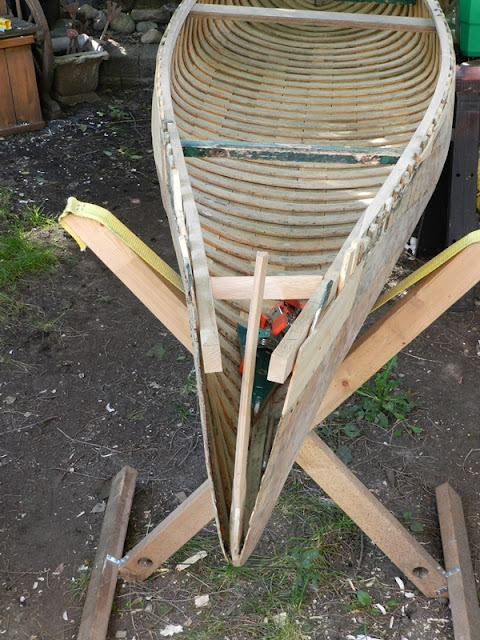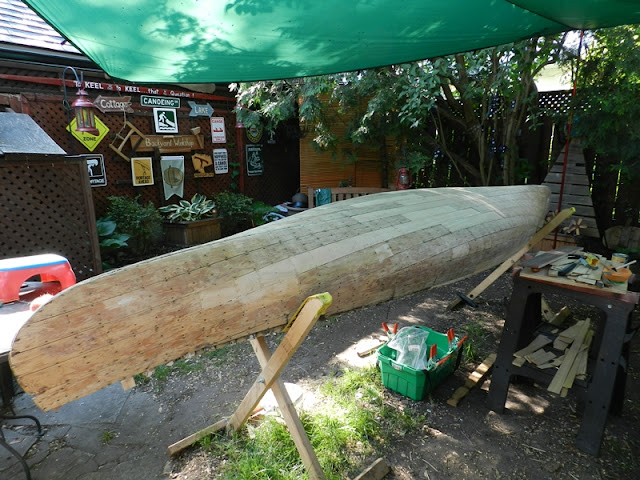With all the major woodwork on the 14' Trapper canoe completed by the summer of 2022, the time had come in the early fall to begin the canvassing process. The hull had been faired, the interior treated with 4 coats of spar varnish and the exterior of the hull oiled.
Learning from the canvassing experience of the 14' Chesnut Playmate in 2019, I adapted the setup with a few tweaks. This time, I built elevated supports onto my sawhorses to allow for less crouching when pulling the canvas down for stapling. This resulted in the canoe being perched quite high and looking funny.
Also, unable to secure lighter weight #12 canvas duck, I ended up using the more traditional #10 duck. The advantage is that the thicker weaved #10 does a better job in hiding some of the imperfections in this 65 year old hull.
The tensioning setup using a Y strap and heavy duty ratchet strap was the same as back in 2019 and the stapling went without a hitch. Next came the stinky process of applying preservative to canvassed hull and letting it air out over a week or so. After this, the canvas was filled once again using a water-based "lagging compound" mud applied in consecutive layers.
The canoe's interior had be covered with an oil-based, dark green paint by the original owner. Despite weeks spent stripping the interior during the early days of the project, there were always flecks of green embedded in woodwork, giving the interior a bit of "character". A decision was made to continue the green tradition of this canoe's existence and paint the hull this standard canoe colour. Along with my Red Chestnut, I now have a set of canoes in vibrant Christmas colours.
As a bit of an extension to this, I decided to paint the deck (which were not original but had been replaced) in this same colour, along with each of the rib tops. As this was going to be used a solo tripping boat, I also removed the stern seat (to be used in another project) and replaced it with a sassafras thwart, also painted green. Being a practical man, the original owner had also long ago replaced the centre thwart with a board of 3/4" plywood. It is still very sound and has greyed to lovely patina.
The original owner had also long worn through the caning on the bow seat and had replaced it with a metal mesh. This had also been painted green as seen in this photo of when I first brought the canoe home.
The loose paint on the seat had been scraped away and new coats of green paint applied to maintain this unique build feature. Here is a shot of the re-vitalized trapper canoe!




















